In today’s digital world, using microphones at home is becoming a more common occurrence. The question is, what kind of microphone should you get? There are pros and cons to both USB and XLR mics.
So, what’s the difference between a USB and XLR microphone?
The key differences between USB and XLR microphones have to do with cost, quality, and how you connect your mic to your computer. USB mics are more cost-effective, portable, and easier to use. XLRs, on the other hand, usually have better sound quality and flexibility, but require additional equipment.
Knowing which tool will work best for your purposes has a lot to do with how you’re going to be using it. Podcasts versus professional voice-over work versus recording songs for publication versus gaming or live streaming all have different needs. Let’s find out what works best for what you’re going to be doing.
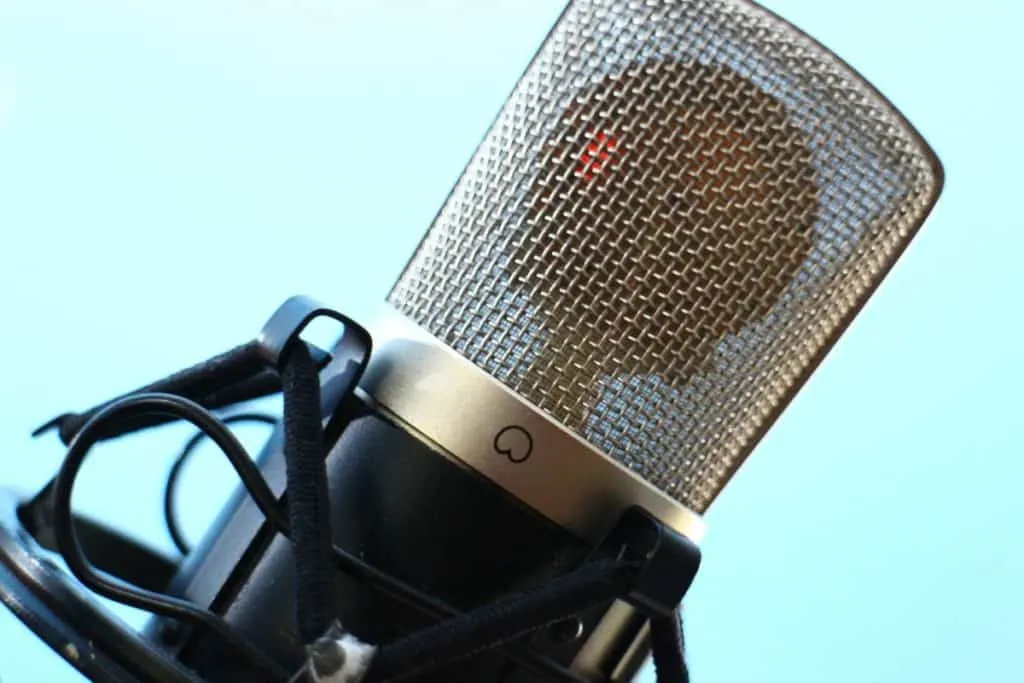
USB Microphones Versus XLR Microphones – Understanding the Differences
If you’re new to the recording scene, it may be tempting to think that a mic is just a mic. That one microphone is the same as another and the only reason for price differences is because of branding.
That just isn’t the case.
USB Microphones
USB is a term that is used a lot in the world of computers and electronics.
USB stands for Universal Serial Bus. It is the vehicle (bus) to transport information that allows devices to talk to one another. USB microphones have a connector that plugs into your computer via the USB portal.
Compared to XLR mics, USBs are relatively new and in their infancy stages. Even so, USB mics have been available since 2005 and have made great developmental strides.
Some things that people like about USB microphones are:
- USB mics are basically plug and play. When you open the box for your new USB microphone, all you need to do is:
- Plug it in
- Download the new drivers
- Open whichever recording program you’ve chosen for your process
- Get started
- USB microphones are initially a less expensive option. As with most things in life, there is an entire range of prices, but USB microphones are generally less expensive than their XLR counterparts. This is a great benefit when you are just starting and want to dip your toe into the pool to see whether you’ll truly be committed to your new adventure.
- There is a range of recording quality options. USB microphones can particularly be good choices for gamers/live streamers and new podcasters.
- Many USB mics have a muting switch. This is a huge benefit when you want to be able to silence your mic because of coughing or other noises.
- Some USB mics have their own headphone jack. In the early days of USB microphones, latency (delay) was a problem. Current USB mics experience between zero and very little latency. This is huge. One of the last things you want is to have the sound disconnected from the video – think about the old Godzilla movies.
- USB mics work well when you only need one microphone. If you need to be able to use multiple microphones, USB mics can be problematic. It becomes more technical to operate multiple USB mics and not all programs support multiple USB mics.
- USB mics are hard to balance. The pre-amp is built into the microphone which means audio interfaces happen directly inside the microphone unless you buy an expensive or high-end model. At that point, it becomes a bigger question as to whether or not a USB mic is really the choice you want to make.
- There isn’t a way to upgrade your sound without buying a new microphone. With some systems, you can upgrade your audio program or your audio interface equipment and get a better sound result. That’s not the case with a USB microphone.
- You are tied to your computer. Because the cord plugs directly into your computer you aren’t able to step away and stay connected to your mic.
USB Microphones Available On The Market
If a USB microphone sounds like it just may be up your recording alley, here are a few options you could consider:
| Microphone Name | Number of Stars | Features |
| FIFINE USB Podcast Microphone for Recording Streaming | 4.7 out of 5 |
|
| SOUIDMY USB Microphone Desktop Recording Microphone | 5 out of 5 |
|
| Razer Seiren Elite USB Streaming Microphone: Professional Grade High-Pass Filter-Built-in Shock Mount | 4.2 out of 5 |
|
| Philips SMP3700 SpeechMike Premium Touch Precision USB Microphone | 4.2 out of 5 |
|
| Blue 1967 Yeti Pro USB Condenser Microphone | 4 out of 5 |
|
XLR Microphones
When you think about how a traditional microphone is connected to its power source, you are undoubtedly thinking about an XLR microphone.
XLR stands for External Line Return. This means that the line to the mic connection is external to both the microphone and the audio equipment.
That line, or connector, which is used for recording is called an XLR3 because it has 3 prongs or pins:
- Positive and Negative. These two wires control the polarities which are balanced within the cable to make it possible for most of the outside interference and transmission noise to be canceled.
- Ground. The ground wire is also critical – without it, you would get shocked by the electricity that’s passing through the cord.
XLR is the option professional sound recorders and top podcasters choose. They do this for multiple reasons:
- XLRs tend to be more durable. Make no mistake. That doesn’t mean they’re indestructible. They are stronger, typically made of better materials, and last longer.
- Requires an external Audio Interface, Pre-Amp, or Mixer. Your microphone cable will plug into one of these devices, which will then connect to your computer via an XLR USB cable.
- These components allow you to control multiple microphones within your process. Audio Interfaces support up to four inputs, whereas a Pre-Amp or Mixer may be able to handle as many as eight.
- These components allow you to use your equipment apart from your computer. Because these components allow for multiple inputs, you are able to connect amplifiers or speakers to an output connector rather than connecting it to your computer. It makes this set-up more versatile and flexible.
- XLRs can be connected to any professional recording equipment. Have you ever noticed that celebrities always seem to have “their” microphone when they’re on television talk or variety shows? That’s because they’re portable and can work with any professional system.
- Upgrading your sound capability requires buying one or all the following:
- Improved XLR microphone
- Better XLR cables
- More robust Audio Interface equipment
- XLR Equipment typically offers a longer warranty. Because this equipment is made for professional-grade work, it’s built with better materials that manufacturers will stand behind for a longer period.
A few XLR Microphones that are available on the market include:
| Microphone Name | Number of Stars | Features |
| MXL Mics Multi-Pattern Condenser Microphone | 4.6 out of 5 |
|
| Rode NT1-A-M Stereo Studio –Vocal Cardioid Condenser Microphone (According to reviews, the link is for one microphone – not two) | 4.6 out of 5 |
|
| Shure SM7B Cardioid Dynamic Studio Vocal Microphone | 4.2 out of 5 |
|
| Audio-Technica AT2035PK Vocal Microphone Pack for Streaming/Podcasting | 4.6 out of 5 |
|
| Heil Sound PR 40 Dynamic Cardioid Studio Microphone Bundle | 4.4 out of 5 |
|
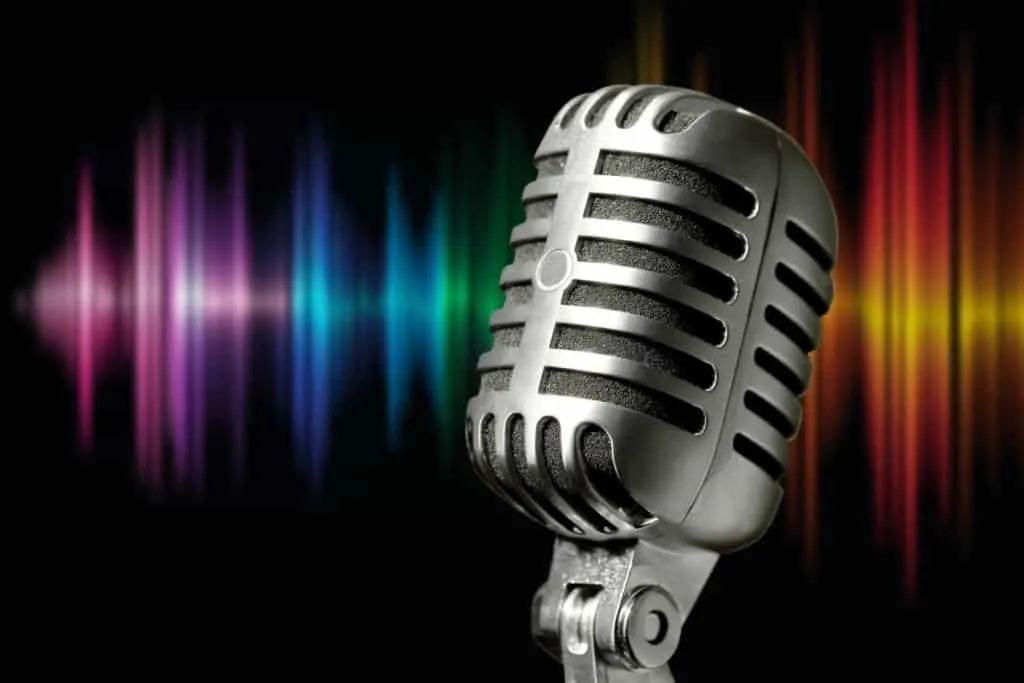
Parts of the Microphone
You know that you talk into one part of the microphone… here’s what happens inside:
- Once your sound waves enter the microphone, they bounce up against the mic’s diaphragm. The diaphragm has a wire connected to it and its purpose is to absorb some of the noise or rough edges from the sound.
- The large diaphragm is good when you want to be able to pick up the full range of sounds, including those “explosive” kinds of sounds like “p”s or the rumbling depth of a bass’s voice.
- The small diaphragms are focused on high frequencies and are best for things like flutes, violins, or piccolos.
Note: Diaphragm size choice is often limited to condenser microphones.
- Another wire is connected to the backplate. This is the piece that the diaphragm bumps up against to create the various sounds.
- XLR microphones also have a small battery within them. The power that comes from the external Audio Interface is known as “phantom power” (more on this in a bit.) That power supports the batter which operates the functions in the microphone.
- Before the sound is transferred via the cable, whether that be the USB or XLR cable, it is translated by a resister. This step provides the programming of the exact fractional decibel level for each tone.
- I have written an article that explains phantom power. You can read it here
Some of the product descriptions also included the terms:
- Cardioid
- Omnidirectional
- Dynamic
- Condenser
- Phantom Power
The rest of this section will discuss these terms, what they mean to the microphone, and why each one matters.
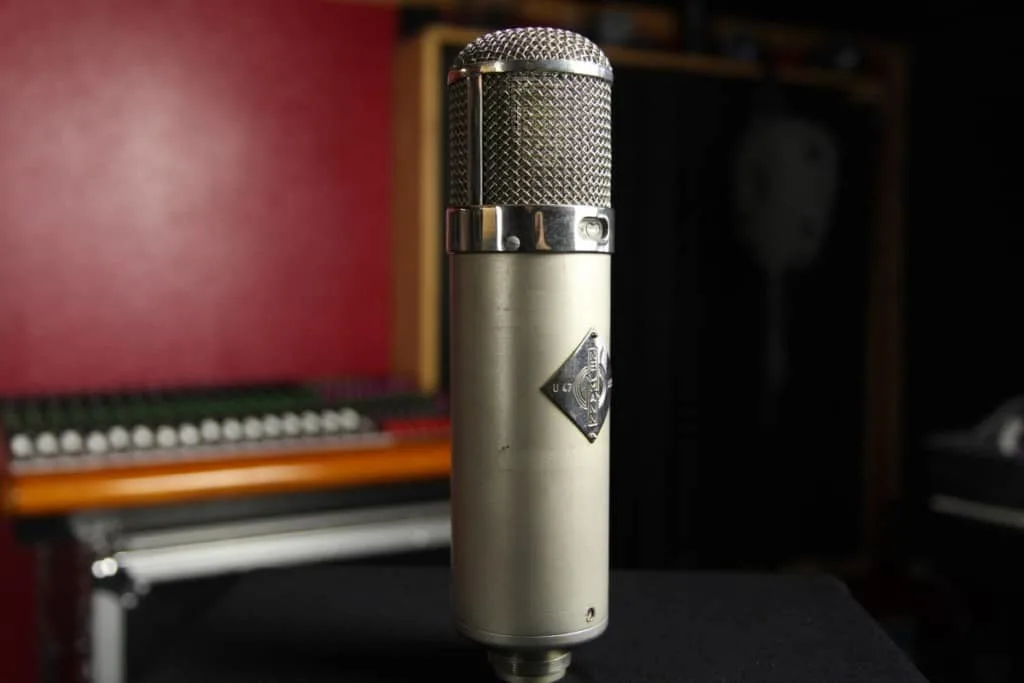
Omnidirectional Versus Cardioid
Omnidirectional functionality in a microphone allows the mic to pick up sounds from every direction around it.
If you want to pick up the echoes in a lofty room or other nearby instruments, but you don’t want them to have their own feed, you will want to choose to use an omnidirectional mic.
One reason that vocalists and acoustic instrumentalists like to play in high ceilinged venues is because the acoustics are incredible. That’s the type of environment that plays to the omnidirectional microphone’s strengths.
Cardioid mics, on the other hand, only pick up the sounds that are directly in front of it. These are the types of microphones used in radio studios, and it’s why each guest has their own mic. This is also the feature you choose if you want to capture sounds from only the snare drum instead of the entire drum/cymbal kit.
The cardioid function is often used for YouTube video recording because the camera is focused in one specific direction and that’s also where the sound is focused.
Dynamic Microphones
Dynamic microphones are often the choice for singers when they’re performing live on stage. MCs like them too because they tend to be hardy. They’re less sensitive to quiet or high-frequency sounds; they have a narrower amount of frequencies they can pick up.
These mics are used to capture
- Loud sounds
- High volumes
- Live instruments
- Amplifiers
- Drums
If you don’t have a lot of acoustic treatments, dynamic mics can work well for a home studio. Particularly if it is a cardioid mic.
Dynamic microphones work best for recording guitars that use an amp to play in different frequencies or very intricate riffs. If that’s the case, consider using a condenser microphone with a large diaphragm.
Condenser Microphones
Condenser mics are extremely sensitive to sounds, which is why they aren’t the mic of choice for live performances. If you want a microphone that will pick up every tone and sound, condenser mics are what you’re looking for.
Professional voice actors typically use condenser mics because of their sensitivity and accuracy. They capture the quieter and more complex sounds making sure that the hearer can tell the difference between a “d” and a “t” sound.
Studio vocalists also use condenser mics, particularly one with a large diaphragm, to make sure they can capture the full range of voice dynamics from a breathy whisper to a note that is graduating through a crescendo.
Condenser microphones with a small-diaphragm are great for recording acoustic guitars in a studio setting because they are able to smooth out too much of the string twang at the lower tone range.

Phantom Power
Phantom power is managed by a button on the Audio Interface or Pre-Amp component. If it isn’t activated, the XLR microphone generally won’t work with the component.
That’s fine, but what is phantom power? It’s a small amount of power generally between 9 and 48 volts, that is required to make the microphone’s diaphragm move (remember the battery inside of the mic? This is part of its purpose.)
The phantom power interface between the component and the battery does the work for the XLR microphone that the computer does for the USB mic.
You can read more about phantom power here.
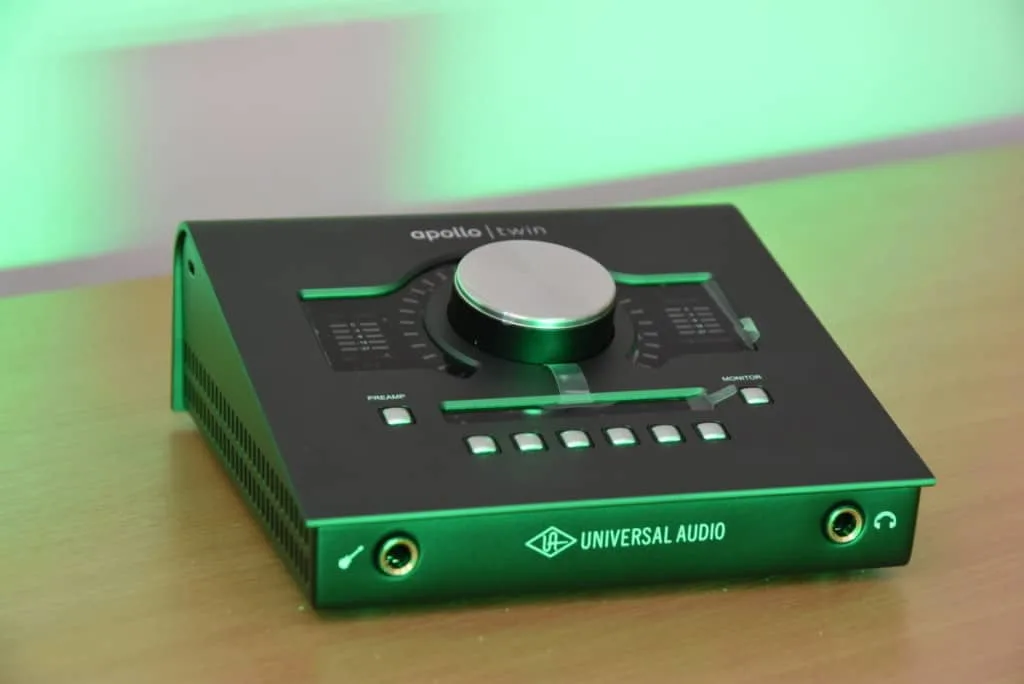
Sound Interface Equipment
The phantom power for your XLR microphone must come from your Audio Interface equipment. Here are some examples of the various equipment you could choose:
Audio Interface (AI)
In this article, AI doesn’t stand for artificial intelligence, we’re talking about Audio Interfaces.
I have written a complete guide on audio interfaces. You can find it here.
Multi-channel AI components can support up to four different inputs to allow you four different feeds to edit in post-production.
Although your PC has a sound card, it isn’t very sensitive or effective. It works, but not for precision recording.
Speaking of precision recording, using an AI means you can mix nearly live. You may experience slight latency (delay) on the computer recording program if you’re adjusting for instant results. An AI is still easier to manage than using a mixer with several knobs.
Audio Interface equipment is the external sound card that connects to your pc via a USB cable.
When you’re researching Audio Interface equipment, you need to make sure that your computer’s operating system supports the audio interface’s software before you buy it.
Another nice feature of the Audio Interface component is that it can also be used as an audio output from the computer to speakers or headphones for better quality sound.
AI Options
| AI Component Name | Number of Stars | Features |
| Presonus Audio Interface | 4.3 out of 5 |
|
| Focusrite Scarlett 18i8 Audio Interface with Pro Tools | 4.5 out of 5 |
|
| PreSonus Studio 24c Audio Interface Bundle with Studio One Artists Software | 4.6 out of 5 |
|
Mixers
You’ve most likely seen massive mixing soundboards in recording and television studios.
Not all mixing boards have to be that confusing or have nearly that many knobs and functions, but they do require immediate attention while the recording is happening.
Whereas you get a separate track for each microphone/input from an Audio Interface component, only one consolidated digital track is delivered to your computer’s recording software when it comes from a mixing board.
Having one consolidated digital track makes performing any post-production finessing more challenging than when you have each separate input that you can massage.
If you’ve worked with sound equipment and understand the nuances of each function, then maybe a mixer is exactly what you want.
Here are some examples:
| Mixer Component Name | Number of Stars | Features |
| BEHRINGER 12 XENYX 122FX 3-Pin XLR | 4.3 out of 5 |
|
| PYLE Sound 6-Channel Bluetooth Compatible Professional Portable Mixer | 4.1 out of 5 |
|
| Audio 2000’s AMX7323-Professional Eight-Channel Audio Mixer | 4.1 out of 5 |
|
How to Care for Your Microphones
You’ve taken the time and expense to invest in this equipment, so you’ll want to make sure that you know how to care for it.
Even though, in some instances, they’ve been described as “durable,” microphones are still delicate pieces of equipment that can be damaged.
Here are some tips that will help you avoid having to replace your mics before you’re ready to upgrade to a new level:
- Handle them as seldom as possible. It may seem obvious, but dropping a mic is really bad for it. The more the mics are handled, the more likely they are to be accidentally damaged.
- Keep your mics dust free. The microphone’s diaphragm is sensitive and prone to deterioration. Dust is a major contributor to that problem. To avoid it, you can do something as basic as covering your microphone with a bag – UNLESS you live in a very humid area.
- Protect it from humidity. Humidity is another ban of the mic’s existence. To protect your microphones, make sure you store them in a padded case or storage container along with some silica gel packs
- Use a windscreen (also known as a “pop filter”). Have you ever seen someone blow into a microphone to test whether or not it’s on? You really don’t want to do that! It can damage the diaphragm. Windscreens help protect the mic from excess bursts of air. They also protect your recordings from the same. They help smooth out the sounds that you record.
- Actually, you can use 2 pop filters. Check out this article
- Use a shock mount. Shock mounts protect your microphone from various movements. If you get excited while you’re talking or interviewing someone and your pound your desk, the last thing you want is for your mic to:
- Pick up the vibration
- Fall over
- Be damaged
- If you want to read more about the importance of a good shock mount check out this article
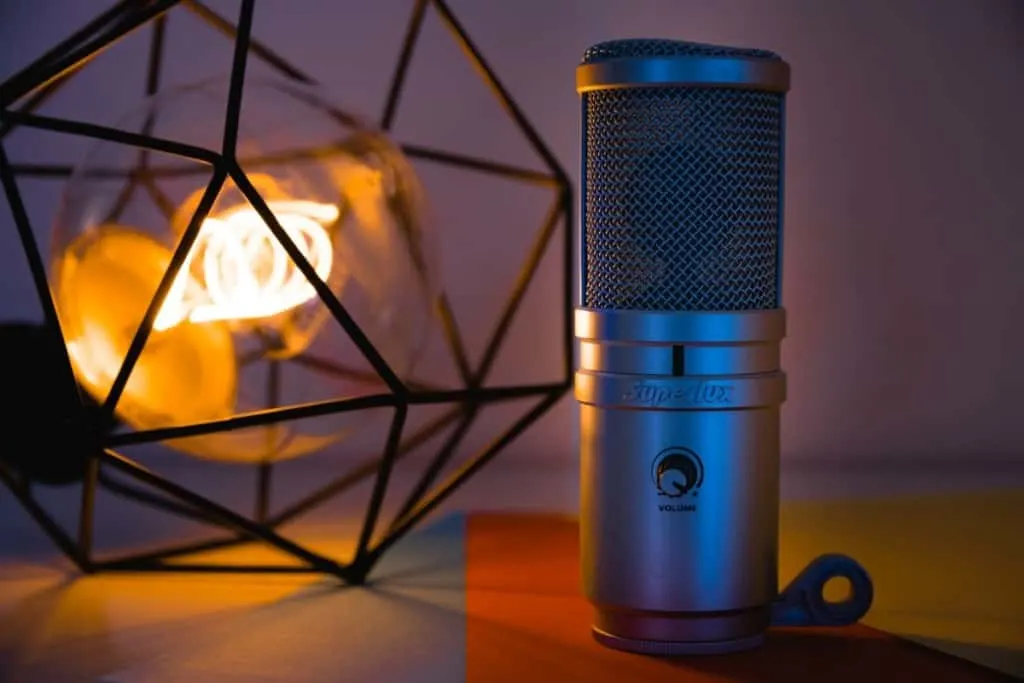
A Completely Different Live Recording Option: Zoom Recorder
Although Zoom™ is a brand, it has become a common term for this type of recorder similarly to how Kleenex™ is used to refer to any facial tissue.
Zoom recorders are hand-held multi-band/input recorders. These are often used by reporters and podcasters to capture interviews or reporting that happens in the field rather than in the studio.
These recorders allow you to easily adjust various inputs and equalizer levels. They also have sound effects that you can overlay on your recording in real-time.
| Microphone Name | Number of Stars | Features |
| Zoom H6 Six-Track Portable Recorder with Interchangeable Microphone System and Accessory Bundle | 4.6 out of 5 |
|
Post-Production Work
After you have finished recording your tracks and you are ready to begin editing them, you have officially entered into your post-production work.
When you connect your tracks from any of your recording options to your computer and download them, you are ready to work on your overall production – to make it exactly what you want it to be.
There are several free software options that are available to you that will allow you to adjust the levels on each track. Maybe you want to make something more prominent or tone something down. You can do this through your post-production editing.
Some of the free software programs include:
- Audacity,
- Avid Pro Tools First,
- Garage Band (iOS/Apple product)
- Zynewave Podium Free
Putting It All Together
As you get started, if you’re thinking about hosting a podcast that won’t have any guests that need to be interviewed, or if you’re getting involved in gaming, a USB microphone will work for what you’re working toward.
If you want to record music sessions or you already know that you’re going to need to have multiple microphone inputs for your process, you’ll want to have XLR microphones.
With your XLR mics, if you’re going to have six or fewer inputs, and you’ll have the luxury of editing your recordings before you publish them, save yourself stress, and use an Audio Interface component. On the other hand, if you’re live streaming your recordings, you will most likely want to invest in a mixer so you can adjust the levels in real-time.
Choosing Gear Can Be Really Hard!
Home recording requires a whole series of equipment, and it can be difficult to do the research to figure out exactly what to buy depending upon your budget.
I have written a complete guide to exactly which equipment you should get depending on your budget.
- Check out my article on Dynamic Microphones Vs Condenser Microphones to further add to your recording knowledge. You can read it here.
Most of all, whichever microphone you choose be it USB or XLR, enjoy your recording!
